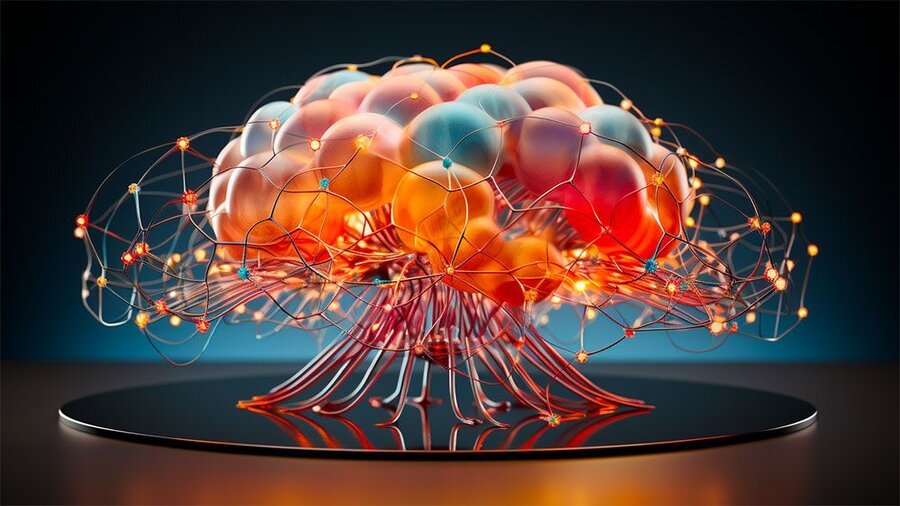A Brain-PC Connection Point (BCI) is an immediate correspondence pathway between the mind and an outside gadget, bypassing the requirement for customary actual collaboration.
BCIs have advanced from essential ideas in neuroscience to exceptionally complex frameworks that might change medication, especially in areas of restoration, nervous system
science, and brain research.
2. Technological Headways in BCIs
BCI innovation has taken critical steps, especially concerning both equipment and programming, considering more powerful and refined mind-machine correspondence. Key areas of improvement include:
- Neuroimaging Techniques: Utilitarian X-ray (fMRI), EEG (electroencephalography), and ECoG (electrocorticography) are utilised to follow and decipher cerebrum action continuously.
- Implantable Devices: Frameworks like Neuralink and other cortical embeds straightforwardly connect with mind tissue to productively decipher brain flags more.
- Remote Communication: Late improvements in remote BCIs make it more straightforward to associate the brain with outside gadgets without the requirement for obtrusive wires.
3. BCIs in Medication: Current Applications
- Neuroprosthetics: BCIs are as of now being utilized to re-establish capability in patients with spinal string wounds or neurodegenerative illnesses like ALS. These frameworks permit people to control prosthetic appendages or impart utilizing thought alone.
- Discourse Restoration: For people with discourse weaknesses (e.g., because of stroke or loss of motion), BCIs can assist with re-establishing correspondence through mind cues.
- Seizure Location and Treatment: BCIs are being used to screen mind movement in epilepsy patients and give continuous information to early seizure recognition.
- Neurorehabilitation: BCIs are important for restoration programs for stroke or horrible cerebrum injury patients, advancing brain versatility and helping with engine capability recuperation.
4. The Job of Man-made consciousness (man-made intelligence) and AI in BCIs
Computer-based intelligence and AI assume an essential part in deciphering and disentangling the huge measure of information produced by BCIs. These calculations help to:
- Work on the precision and proficiency of brain signal understanding.
- Anticipate engine or mental errands, giving more natural control of prosthetics or assistive gadgets.
- Modify restoration programs given individual brain designs, upgrading the recuperation cycle for patients.
5. Future Revelations and Expected Applications
The fate of BCIs in medication is unbelievably encouraging. Portion of the key regions where BCIs could have extraordinary impacts include:
- Mental Enhancement: BCIs could be utilized to upgrade mental capability, memory, and picking up, offering medicines for conditions like Alzheimer’s and dementia.
- Mental Health: BCIs could offer new ways to deal with treating emotional well-being conditions like discouragement, nervousness, PTSD, or schizophrenia by affecting mind districts associated with temperament guidelines and mental cycles.
- Re-establishing Vision or Hearing: High-level BCI frameworks might sidestep harmed tactile organs to re-establish vision or hearing by straightforwardly invigorating the mind.
- High-level Prosthetics and Robotics: The reconciliation of BCIs with mechanical exoskeletons and prosthetics could give consistent command over counterfeit appendages, empowering a greater quality of life for people with inabilities.
- Neurofeedback and Mind Rehabilitation: BCIs can work with treatments for neurological problems like ADHD, epilepsy, or stroke by giving constant input and advancing the self-guideline of cerebrum movement.
6. Challenges and Moral Considerations
- Invasiveness: Embedding BCIs can be obtrusive and may convey the dangers of contamination, tissue harm, or insusceptible dismissal. Harmless options like EEG-based BCIs are a developing field, however, and may have restrictions in signal clarity.
- Information Privacy: BCIs assemble delicate mind information, raising worries about protection, information security, and the potential for abuse.
- Long-haul Effects: As the innovation turns out to be more pervasive, the drawn-out impacts of BCI inserts on the cerebrum remain a significant area of study. How the mind adjusts over the long run and the results of the supported brain connecting are still to a great extent obscure.
- Moral Dilemmas: There are critical moral worries encompassing mental upgrades, the potential for mind control, and the reasonableness of BCI access, particularly for people with various financial foundations.
7. Regulatory and Institutional Support
- States and associations like the FDA and the European Prescriptions Organisation (EMA) are starting to lay out administrative structures to guarantee the protected utilisation of BCI advances in clinical settings.
- Cooperative endeavours between tech organisations, research foundations, and medical care suppliers are likewise speeding up progress in making BCIs available and successful for patients.
8. BCIs in Neuroscience Research
BCIs are working with a notable examination in grasping the mind’s capabilities, especially the complicated connections between various districts of the cerebrum. Bits of knowledge acquired from the BCI examination can add to:
- Planning brain networks related to explicit ways of behaving or mental capabilities.
- Concentrating on brain adaptability and how the mind overhauls itself after injury or infection.
- A better comprehension of neurodegenerative infections and psychological wellness problems.
9. Vision for the Future
As BCI innovation keeps on propelling, it is imagined that in the next few decades:
- BCI frameworks could turn out to be more coordinated in day-to-day existence, assisting individuals with handicaps to recover freedom and portability.
- New medicines could arise for illnesses that were recently remembered to be untreatable, like specific types of loss of motion or mind wounds.
- A shift towards more customized, patient-focused care models, where BCIs are custom-made to every individual’s cerebrum action and needs.
Conclusion
Mind PC Interfaces are at the bleeding edge of both clinical and mechanical development. While challenges stay, the potential for further developing lives—whether through recovery, upgrade, or illness treatment—is tremendous.
With proceeded with exploration, coordinated effort, and mechanical turn of events, BCIs could rethink the fate of medication, empowering new treatments, apparatuses, and disclosures to assist patients in manners we with canning just start to envision.
